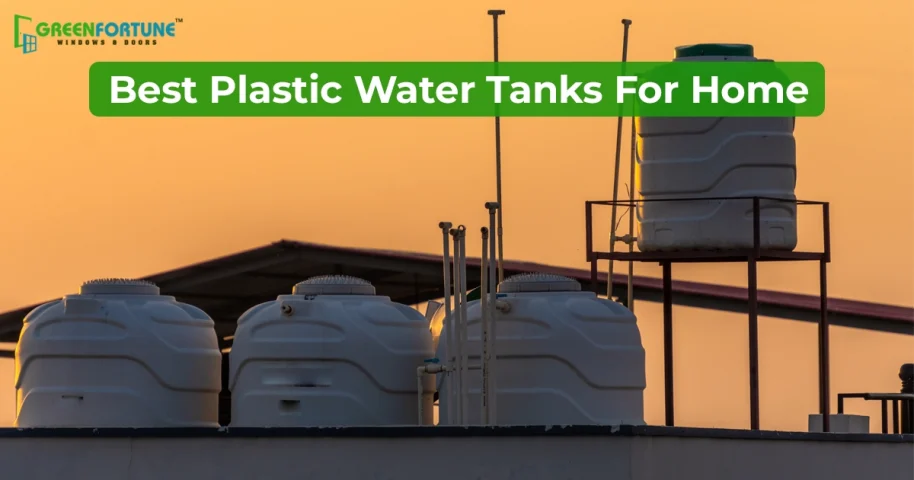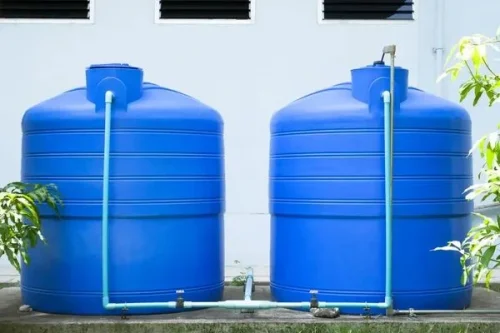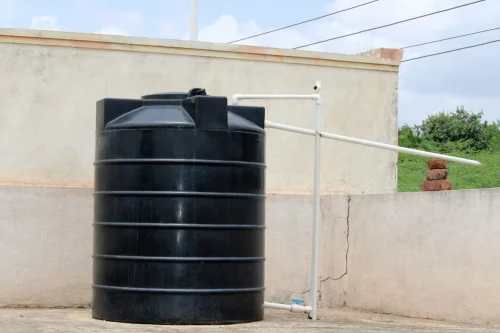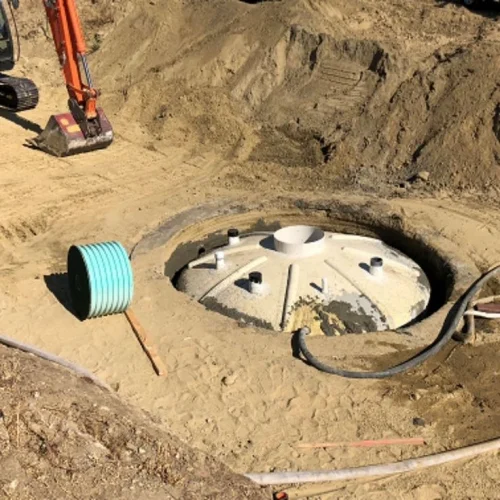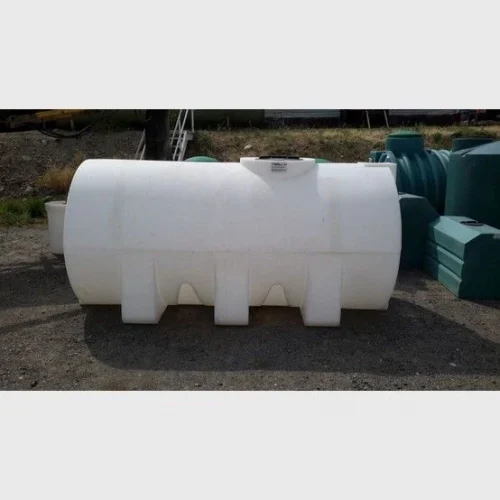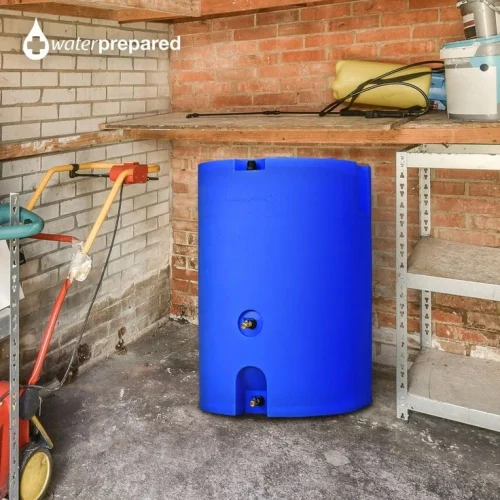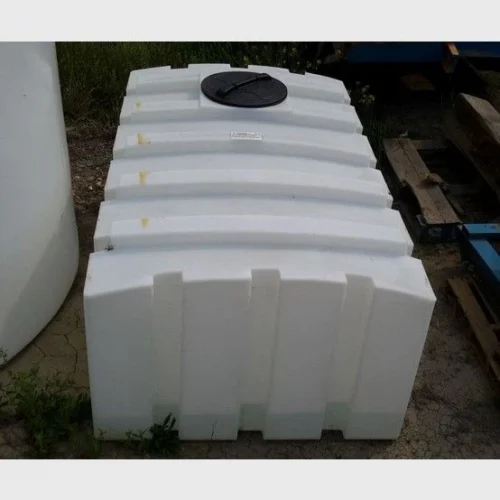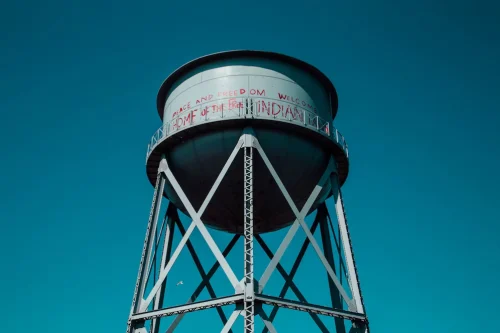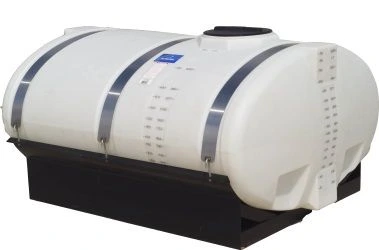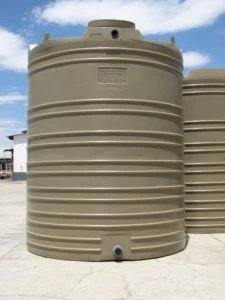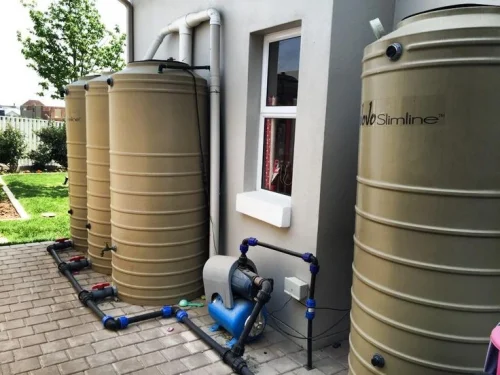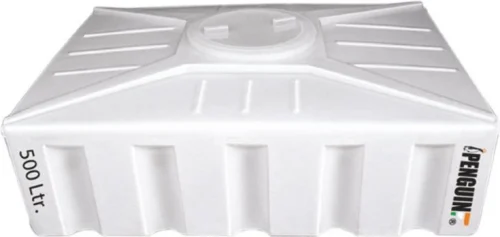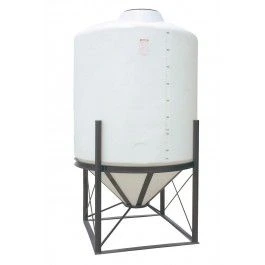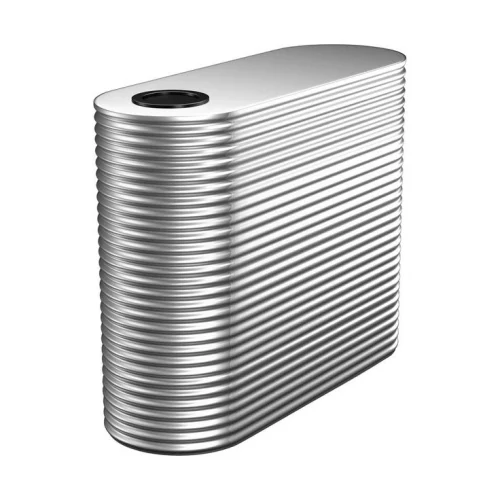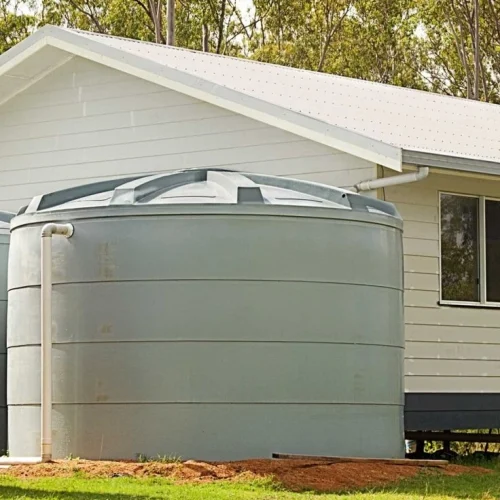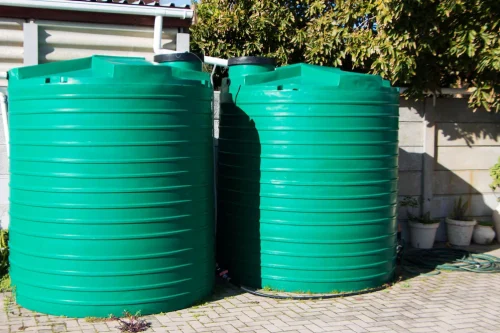
Cement Fibre Board Building Material Revolutionizing Modern Construction
April 10, 2025
From Entry to Interior: The Best Types of Doors for Home
April 10, 2025If you have noticed, plastic water tanks are the most common choices for many Indian homes. Ever wondered why?
Water is something we use every day for drinking, cooking, cleaning and more. Hence, storing it safely in household water tanks is very important.
People prefer plastic water storage tanks because they are safe to use, affordable, lightweight, and long-lasting. Unlike metal or concrete tanks, they do not rust or corrode easily.
But with so many options available, how do you choose the right one? We will explore everything you need to know about plastic water tanks in this blog.
Source: Pinterest
Table of contents
- Advantages Of Using Plastic Water Tanks
- Types of Plastic Water Tanks
- 1). Vertical Water Tanks
- 2). Underground Water Tanks
- 3). Horizontal Water Tanks
- 4). Stackable Water Tanks
- 5). Rectangular Water Tanks
- 6). Open-Top Water Tanks
- 7). Elliptical Cradle Tanks
- 8). Double-Wall Water Tanks
- 9). Cylindrical Water Tanks
- 10). Loft Water Tanks
- 11). Cone Bottom Water Tanks
- 12). Slimline Water Tanks
- 13). Septic Water Tanks
- How To Choose The Best Plastic Water Tanks?
- Tips To Maintain Plastic Water Tanks
- Conclusion
- FAQs
Advantages Of Using Plastic Water Tanks
|
Also read: Everything You Need To Know About Rainwater Harvesting!
Types of Plastic Water Tanks
Given below are the popular types of plastic water tanks.
1). Vertical Water Tanks
These are the most commonly used plastic water tanks at home for storing drinking water. They stand upright and take up very little floor space. They are available in various sizes, from small tanks to large capacities of 10,000+ litres.
2). Underground Water Tanks
These water tanks are installed below the ground. And so, they keep the water cool in hot climates. They are also excellent space-saving options. Underground water tanks are ideal for rainwater harvesting and long-term storage. It is recommended to ensure proper installation to prevent ground pressure damage.
3). Horizontal Water Tanks
These water tanks are of cylindrical shape and are designed to transport water in trucks, farms and construction sites. Since they lie flat, it prevents water from tripping over while moving.
4). Stackable Water Tanks
These types of plastic water tanks can be stacked on top of each other to save space. They are best suitable for areas with limited storage, such as apartments, commercial buildings and factories.
5). Rectangular Water Tanks
These water tanks easily fit into corners, narrow spaces and compact areas because of their box-like fla. They are space-saving and are great for apartments, offices and small homes.
6). Open-Top Water Tanks
These water tanks do not have lids and are open, making it easier for water filling and cleaning. They are commonly used for water treatment, fish farming and agriculture. Open-top water tanks are not ideal for drinking water storage due to exposure.
Also read: How To Choose The Right Water Pipes For Your Home?
7). Elliptical Cradle Tanks
These plastic water tanks are similar to horizontal tanks but have an elliptical shape. This design promotes better weight balance. Elliptical cradle tanks are used for firefighting, agriculture and industrial purposes.
Did You Know? Plastic water tanks are made from different types of plastic, like Polyethylene, Polypropylene, PVC, FRP, and ABS. |
8). Double-Wall Water Tanks
Double-wall water tanks are mostly used for storing chemicals and so come with two layers for added durability. They are also leak-proof. In extreme weather conditions, these tanks are also used for storing drinking water.
There are also single, triple, four and five-layered water tanks available.
9). Cylindrical Water Tanks
These tanks are cylindrical in shape but stand tall, allowing for large amounts of water to be stored. They are suitable for residential buildings, farms, and industries.
10). Loft Water Tanks
As the name suggests, these plastic water tanks are specially designed to be placed in lofts and attics. They are mostly used in homes to store water for daily usage.
11). Cone Bottom Water Tanks
These water tanks are cone-shaped and so the water gets drained easily and completely. They are also used in factories, industries, and wastewater treatment.
12). Slimline Water Tanks
These are suitable for narrow spaces, like side yards, balconies, and small homes, because of their thin, space-saving, modern house water tank design. It is commonly used in urban homes and apartments.
13). Septic Water Tanks
These plastic water tanks are used in homes which do not have sewage connections to store and treat wastewater.
Also read: Septic Tank Location As Per Vastu!
How To Choose The Best Plastic Water Tanks?
When buying plastic water tanks,
- Make sure you opt for the right capacity based on your family size.
- Find out if the tank is made of a food-grade plastic that ensures safe drinking water.
- Opt for multi-layered tanks, as they protect against heat, algae and contamination.
- Check for ISI certification to ensure quality and durability.
- Always go with darker colours, as they block sunlight effectively.
Advanced Features To Look Out For
- UV-resistant coating to prevent water from heating up and growing algae
- Smart water level indicators to prevent overflow
- Antibacterial inner layer to ensure safe drinking water
- Leak-proof lids to keep dirt, insects, and dust out of the tank
If you are wondering, with so many options, which water tank is best for your home? Overhead, vertical, loft, slimline, rectangular and stackable work the best! |
Tips To Maintain Plastic Water Tanks
- Make sure you clean it every 3 to 6 months to remove dirt and bacteria.
- Check for leaks and cracks regularly to avoid water wastage.
- Install a water filter if you consume tank water.
- Add chlorine tablets occasionally to kill the bacteria and keep your water fresh.
Also read: How To Stop Water Leakage From Window?
Conclusion
A water tank is an essential part of any home. So, choosing the right one matters. Plastic water tanks are affordable, durable and easy to maintain. Make sure to choose one that is of high quality with proper layers and UV protection for long-lasting performance.
When choosing a water tank, durability matters. It’s the same for the doors and windows in your home. GreenFortune’s uPVC doors and windows offer excellent insulation, keeping your home cooler in summer and warmer in winter. They are weather-resistant and low-maintenance, making them a long-lasting choice.
FAQs
1). Which plastic is good for a water tank?
The best plastic is food-grade polyethylene (PE) because it’s safe, strong, and doesn’t mix with water. HDPE is even better since it lasts longer and doesn’t crack easily.
2). How much do plastic water tanks cost?
The price depends on the size and brand. A 500-litre tank costs around INR 3,000 to INR 5,000, while a 5,000-litre tank can go up to INR 40,000. Bigger tanks and better quality cost more.
3). What are the disadvantages of plastic water tanks?
The major disadvantages of plastic tanks are that they can crack, heat up in the sun, and grow algae if not cleaned. They aren’t as strong as metal tanks, but good quality ones last for years.







